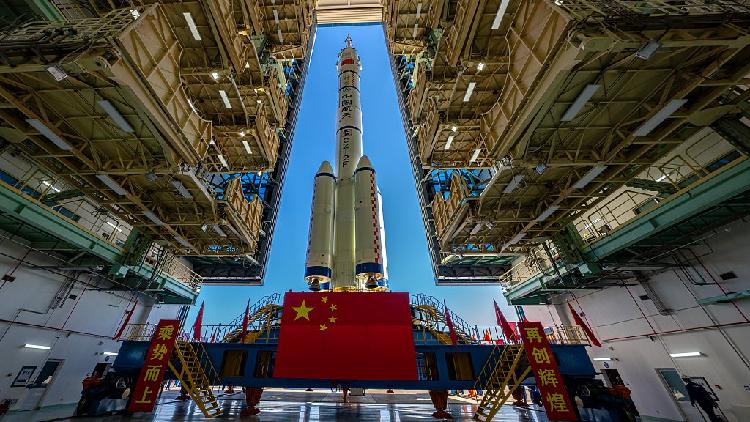China schedules Wednesday launch of Shenzhou-19 crew to space station
The China Manned Space Agency announced during a press conference on Tuesday that the Shenzhou-19 crewed spaceship is set to be launched at 4:27 a.m. on Wednesday from the Jiuquan Satellite Launch Center located in northwest China.

Onboard will be Chinese astronauts, or taikonauts, Cai Xuzhe, Song Lingdong, and Wang Haoze, who will embark on the Shenzhou-19 manned mission to China’s space station, with Cai serving as the commander.
Cai Xuzhe previously participated in the Shenzhou-14 manned mission, while both Song Lingdong and Wang Haoze belong to China's third batch of taikonauts and are set for their inaugural flight mission.
The crew is expected to remain in orbit for around six months, planning to return to the Dongfeng landing site in Inner Mongolia’s north around late April or early May next year.
Throughout their mission, the crew will receive the Tianzhou-8 cargo ship along with the Shenzhou-20 crewed spacecraft.
**Key Objectives**
The Shenzhou-19 mission represents the fourth crewed mission within the application and development phase of China's space station and will be the 33rd mission in the country’s manned space program.
During their six-month tenure, the crew will handle a range of activities, including conducting an in-orbit rotation with the Shenzhou-18 crew, executing space science tests and experiments, performing extravehicular activities, transporting cargo, installing shelters for space debris, and managing the installation and recovery of extravehicular payloads and equipment. They will also participate in science education and community outreach initiatives to boost the operational efficiency of the space station.
**86 Space Science and Technology Experiments**
The mission will feature 86 space science research and technological experiments, primarily focused on biological and physical space science. This area is one of five key scientific themes outlined in China's recently released medium- to long-term development plan for space science covering 2024 to 2050.
These experiments will include structural analysis of protein crystals cultivated under microgravity and exploring the nonequilibrium dynamics of soft matter. They will span various fields, such as space life science, microgravity basic physics, space materials science, space medicine, and novel space technology.
Significant advancements are anticipated in areas like pioneering research on fundamental theories, preparation of new materials, understanding space radiation mechanisms, and examining the physiological effects of microgravity, along with the biological impacts of hypomagnetic fields and molecular mechanisms.
To commemorate the second anniversary of the completion of China's space station, a report detailing the scientific research and application progress will be published, showcasing notable achievements from scientific and application missions since the station's deployment.
Click here for the livestream of the press conference.
Sanya Singh contributed to this report for TROIB News
Discover more Science and Technology news updates in TROIB Sci-Tech












